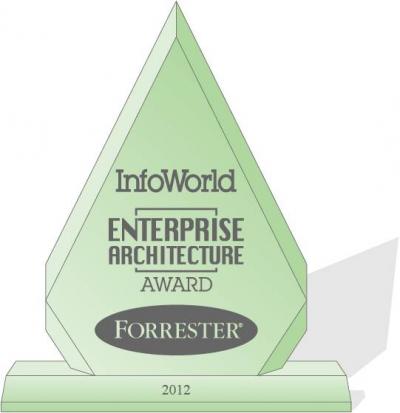2012 EA Award Winners: Business-Focused, Strategic And Pragmatic
In Forrester’s EA Practice Playbook, we describe high-performance enterprise architecture programs as “business-focused, strategic, and pragmatic.” They are business-focused so that the direction and guidance EA provides has clear business relevance and value. They are strategic because the greatest value EA brings is to help its business to achieve its business strategies. They are pragmatic because, well, the path to strategy is never straight, and EA teams who aren’t agile in their approach get pushed aside.
This year’s InfoWorld/Forrester EA Awards program used this theme to find and recognize our 2012 winners:
- National Grid, facing the enormous changes to the utility industry, developed an enterprisewide business capability model and made that the center of their joint business-IS planning. The result? All the way up to the C-level, EA is being recognized as a strategic change agent.
- Scottish Widows Investment Partnership “reinvented” their EA program, centered on a business capability model developed over four weeks, and used to organize and link all the EA portfolios. They now have business managers as well as EA using their architecture planning tool.
- Northwestern Mutual expanded the scope of enterprise architecture to link together business architecture, a service-oriented architecture for specific IT functionality, a deep investment in creating a big data analytics environment and a mobile computing environment.
- Sberbank built their EA program from the ground up, and in 18 months, have in place business, enterprise application, and integration architectures, and implemented Sberbank’s application and BPM platform architecture. Their work guided a bank-wide risk management system, new remote service channels, and a new processing system architecture.
- Telstra Global needed to develop a realistic three-year blueprint for the entire company, one that included an IT architecture which would support future TG products without any customization. Their EA team delivered on this, with results ranging from application consolidation to Zero Touch Provisioning & Activation.
One winning submission, National Grid, said it best:
“. . . reposition the perception of EA within IS and in the business, away from being the ‘traffic warden’ governing against technical standards to being the ‘travel agent’ helping to set a direction and planning the journey.”
For a summary of each winning EA program submission, visit the InfoWorld Enterprise Architecture Award website.
I want to congratulate these five winning EA programs as well as their sponsors, managers, and staff, for putting together programs we can learn from.
I also want to extend a special thanks to our judges for their time wading through pages of documentation and slides: Eric Meredith, VP, Enterprise Architecture Governance, PNC Bank; Trekker Armstrong, Director, Planning and Enterprise Architecture, TransCanada Pipeline; David Prior, Head of Enterprise Architecture Center of Excellence, GlaxoSmithKline; and Con Kenney, Senior Research Fellow, National Defense University.